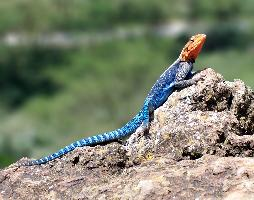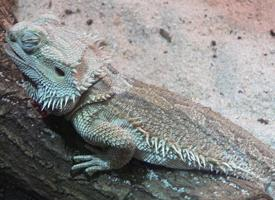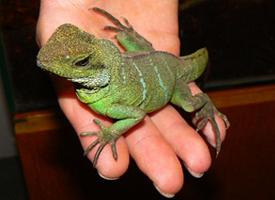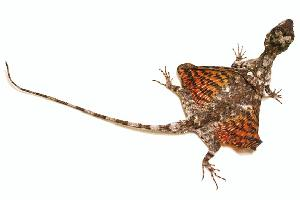
Váhy a míry
| Délka | od 30 do 40 cm |
|---|
Popis zvířete
The Common agama, scientifically known as Agama agama, is a fascinating reptile species belonging to the family Agamidae. This species is widely distributed across Sub-Saharan Africa, thriving in a variety of habitats ranging from semi-deserts to savannas and even extending into human-dominated landscapes such as plantations, gardens, and urban areas. The adaptability of the Common agama to different environments is a testament to its resilience and versatility as a species.One of the most striking features of the Common agama is its physical appearance. Adult males exhibit a vibrant array of colors, particularly during the breeding season. Their bodies can display vivid blues, oranges, and reds, making them highly conspicuous against the more muted backgrounds of their environments. This coloration plays a crucial role in social signaling, especially in displays of dominance and territoriality. In contrast, females and juveniles tend to have more subdued coloration, typically ranging from brown to olive, which helps them blend into their surroundings and avoid predation.
The Common agama is a medium-sized lizard, with males generally larger than females. An adult can grow up to 30 centimeters in length, including the tail, which constitutes a significant portion of its total body length. The body is robust with a somewhat triangular head, and the agama possesses strong limbs equipped with sharp claws. These physical attributes are well-suited for a life spent climbing and basking on rocks, trees, and walls.
Agama agamas are diurnal creatures, meaning they are active during the day. The morning is often spent basking in the sun to raise their body temperature, which is essential for their thermoregulation. As ectotherms, they rely on external heat sources to regulate their body temperature. Once adequately warmed up, they become more active, hunting for food and patrolling their territory.
Their diet is omnivorous but leans heavily towards insectivory. Common agamas feast on a variety of insects such as ants, beetles, and grasshoppers. However, they are also known to consume small mammals, reptiles, and plant material, demonstrating their opportunistic feeding behavior. This dietary flexibility further underscores their adaptability to different environments.
Social structure among Common agamas is quite pronounced, with dominant males controlling territories and displaying their bright colors to assert dominance and attract females. These males are polygynous, often mating with several females within their territory. The social hierarchy is also evident in the way subordinate males and juveniles exhibit more muted coloration to avoid confrontations with dominants.
Reproduction in the Common agama involves females laying clutches of eggs in burrows or hidden locations in the soil. The number of eggs per clutch can vary, but it generally ranges from 5 to 12. The eggs incubate for a period depending on the temperature and humidity of the environment, after which hatchlings emerge, already capable of fending for themselves.
The Common agama, with its striking appearance, fascinating behaviors, and adaptability, is a remarkable species. Its presence in diverse habitats across Sub-Saharan Africa showcases its resilience in the face of changing landscapes and environmental pressures. As such, the Common agama remains a symbol of the rich biodiversity found within the African continent.
Podobná zvířata
Nové fotografie zvířat
Top 10 zvířat
- Chinese water dragon (Physignathus cocincinus)
- Dolphin gull (Leucophaeus scoresbii)
- Galápagos tortoise (Geochelone nigra complex)
- Japanese macaque (Macaca fuscata)
- Colombian red howler (Alouatta seniculus)
- Sea urchins (Echinoidea)
- Barbary macaque (Macaca sylvanus)
- Diana monkey (Cercopithecus diana)
- Moustached guenon (Cercopithecus cephus)
- Guinea baboon (Papio papio)


